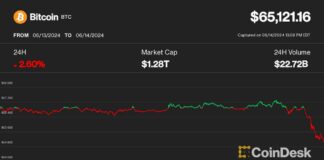A major issue that is holding back widespread adoption of blockchain technology is the focus on speculation within the industry. In order to create a sustainable ecosystem and attract more users, it is crucial for protocols to reconsider how tokens are distributed. Rather than being fixated on inflated valuations and price speculation, the emphasis should be on long-term utility and transparency.
This year has seen a resurgence in token launches in the cryptocurrency market, with many projects adopting a “low float, high fully-diluted value (FDV)” strategy. This strategy involves launching tokens at a high price, showcasing a multi-billion dollar valuation, and generating hype around the project’s potential. While this approach may initially attract attention, it is ultimately artificial and unsustainable.
The “low float, high FDV” model entails releasing only a small percentage of the total token supply to the market at a high price. This creates a misleadingly inflated FDV for the project, as many token holders overlook the remaining token supply that has yet to enter circulation. Although this approach may generate initial interest, projects that follow this model often experience short-lived benefits that do not last in the long run.
In order to shift the focus of the industry towards distribution and utility, it is essential for the crypto space to take bolder steps and move away from price speculation. Alternative models for token launches are beginning to emerge, such as the approach taken by FRIEND, a blockchain-based social platform, which distributed all tokens to the community from day one.
One promising alternative is the market-derived FDV approach, which involves decentralized exchange (DEX) trading to reduce speculation and foster a community of long-term participants. By prioritizing a higher initial float and a capped supply, this approach focuses on a token’s intrinsic utility and the project’s real-world potential rather than speculative pricing.
This strategy offers several advantages, including reduced speculation, organic growth, and increased transparency and trust within the community. While some may argue that a market-derived FDV approach could lead to slower initial growth or undervaluation, the long-term benefits of a stable and sustainable protocol outweigh these short-term concerns.
It is crucial for the blockchain industry to prioritize transparency, long-term utility, and community trust over immediate gains. By embracing a market-derived FDV approach, projects can build stronger ecosystems that benefit all participants. It is time for the industry to shift its focus towards creating real value and products, rather than chasing after the next hot token.














